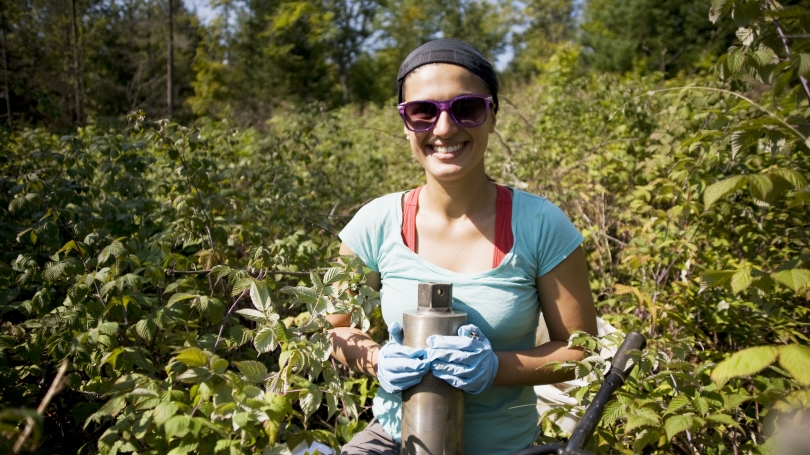
- About
- Programs
- Student Opportunities
- For Faculty
- News & Events
Back to Top Nav
Back to Top Nav
Back to Top Nav
Back to Top Nav
Back to Top Nav
Ecology and Evolutionary Biology
Arctic soils contain more than half of the soil carbon that is stored worldwide. Because microorganisms are more active at higher temperatures, warming temperatures in the Arctic could cause a significant release of carbon from soils to the atmosphere, creating a positive feedback to climate change.
Chelsea is measuring the sensitivity of Greenlandic soils to warming temperatures and determining if and how vegetative cover (shrub versus grass-dominated) influences belowground soil carbon dynamics.
During the summer of 2012, Chelsea and her colleagues collected 20 deep soil cores from two locations near Kangerlussuaq, Greenland, a near-ice zone and a zone further away from the ice sheet. They are measuring soil texture, pH, carbon and nitrogen content, and doing sequential carbon extractions.
So far, her results indicate significant differences in the amount of carbon in grass versus shrub-vegetated areas that persist to 60 cm deep in the mineral soil profile. As shrubs continue to expand in a warming Arctic, measuring the consequent changes in belowground carbon dynamics improves our understanding of how soils may contribute to further climate warming.
YouTube: Chelsea Vario Petronko talks about the biogeochemistry of warming ecosystems.
YouTube: Chelsea Vario Petrenko is featured in the viral video "Science in Greenland: It's a Girl Thing"